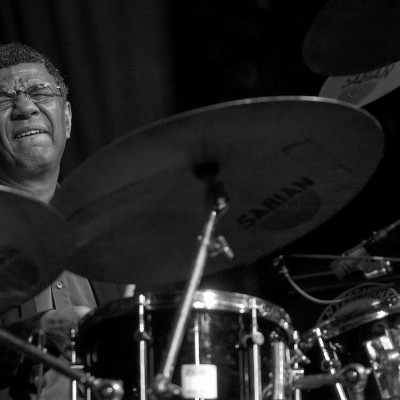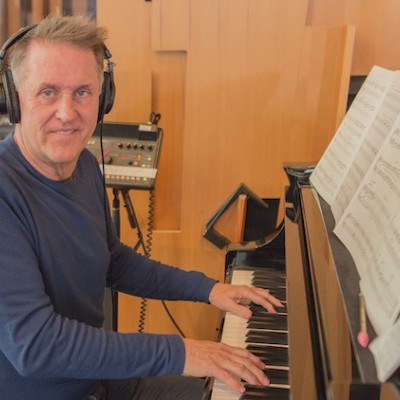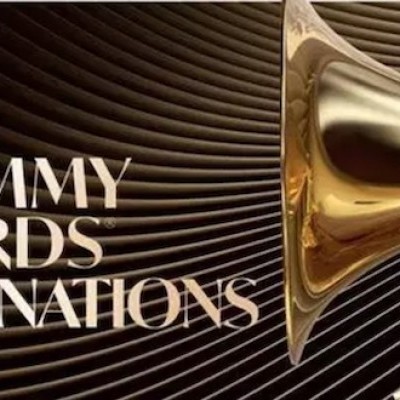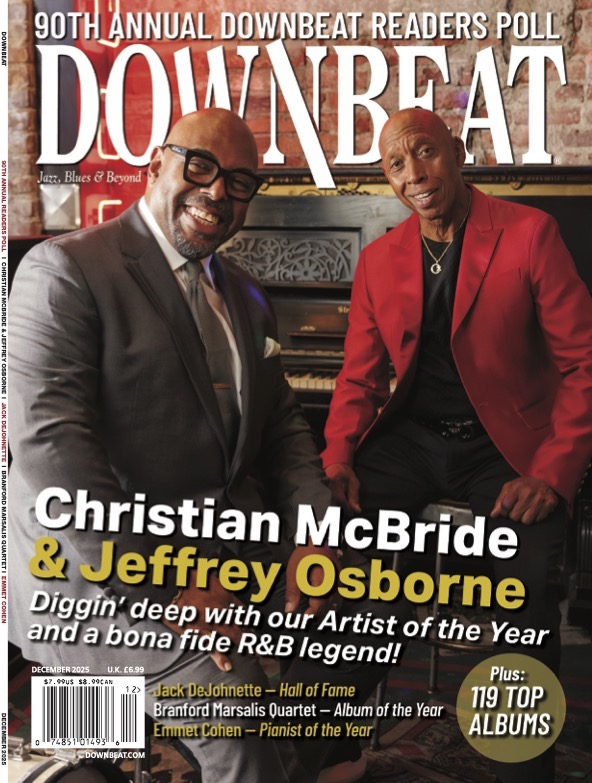Oct 28, 2025 10:47 AM
In Memoriam: Jack DeJohnette, 1942–2025
Jack DeJohnette, a bold and resourceful drummer and NEA Jazz Master who forged a unique vocabulary on the kit over his…

Kenny Barron will release a three-disc set of duets with the late Mulgrew Miller on Oct. 18. The 76-year-old pianist and bandleader also has a trio project in the works with bassist Dave Holland and drummer Johnathan Blake.
(Photo: Philippe Lévy-Stab)Last year, Blue Note released Kenny Barron’s leader debut for the label: Concentric Circles, a tour de force for quintet featuring, for the most part, the pianist’s original compositions. Barron had recorded for Blue Note on other high-profile dates—as a sideman for bassist Ron Carter, saxophonist Sonny Fortune, singer Dianne Reeves and vibraphonist Bobby Hutcherson, for example—but never under his own name. Odd, given his stature in the jazz world, his 40-plus albums as a leader and the profusion of legendary players with whom he’s collaborated during a five-decade career.
One of these legendary players was pianist Mulgrew Miller (1955–2013). For several years, the two toured as an improvisational duo, mostly outside the States. On Oct. 18, Groovin’ High and Sunnyside will release a three-disk album, The Art Of Piano Duo: Live, that documents three of their concerts—one in France during 2005 and two in Switzerland in 2011.
Barron recently spoke about his latest releases, his fruitful relationship with Miller and an upcoming trio record that includes bassist Dave Holland and drummer Johnathan Blake.
The following has been edited for length and clarity.
You and Miller played together for decades. How did you two meet?
I first met Mulgrew on a jazz cruise ship. It had to be in the early ’80s or late ’70s. I wasn’t playing, I was just there hanging out. He was playing with [bandleader] Mercer Ellington, and he introduced himself to me. He asked me if I wanted to sit in and I said no, that I’m on vacation. I told him I didn’t even want to see a piano. He couldn’t understand that, but many years later he told me, “I get it now.” [laughs]
Later on, you did start to play together, though. How did that collaboration come about?
Throughout the years, we’d run into each other on the road, traveling, whatever. And there was a club in New York called Bradley’s, basically a piano room. We came up with the idea of playing duo piano there using two pianos. That was the first time that we did it, and it worked so well we tried to figure out how we could do it in the future.
All told, how many four-handed concerts did you play with Mulgrew?
Hard to say, but at least 15 to 20. I still have some tapes from another tour that we did somewhere in Austria.
Playing live like this, you and Mulgrew were very exposed, musically—there was nowhere to hide. And yet the extended improvisations on this album are so well-crafted. Did you and Mulgrew work out your sets in advance to achieve the balance?
We never talked about the music. We would sit down and determine who was going to start and that person would just start playing. If I knew [the tune], I would just nod my head. If I didn’t know it, I’d shake my head and he’d go on to something else. We just let it happen. That was the fun of it, wondering where we could go with it. Most of the time it worked.
You two seemed to have had extraordinary nonverbal communication.
A key element [to improvising] is listening. You don’t want to get in the way [of the other musician’s playing] because it can be very, very dense with two pianos. We were both aware of this, so at times one of us would pull back a little bit, so the other person could be heard a little bit more clearly. So, it’s about listening, trying to stay out of the way, and also reacting. That’s how it would work.
And in contrast with Concentric Circles, you and Mulgrew performed mostly standards.
Standards made it easier to play something together. We could have done just a completely free improvisation, but we didn’t try it. Both of us love melody, and Mulgrew was a great lyrical player. I loved the same things, and that’s one of the reasons we were compatible.
Your approach to Concentric Circles was different from that of the live recordings—the same melodic focus, but more arranged and structured.
There was a lot of writing involved [with Concentric Circles] and one rehearsal. Everyone knew what they were going to do, and we [limited] the length of the solos.
And you decided to work with a larger ensemble for that one, rather than a duo or trio.
I’d been wanting to do a quintet record, and [the quintet] had been working on and off when Universal France approached me about doing it. There was a studio within walking distance of my house, and we rehearsed one day, went in and recorded for two days, and then we were finished. I don’t like to do a lot of takes. Most of the stuff was done in no more than three takes. I was very happy with that record.
This was your first album for Blue Note. How did that come about?
It actually wasn’t [recorded for] Blue Note. It was for Universal, but right after recording the album, the producer was let go from Universal. So, we had this record, but didn’t know what to do with it. Then [Blue Note president] Don Was made the decision to put it out on [the label]. That was really a one-time thing. I’m not signed with anybody now.
Do you have something else in the works?
Dave Holland and I did a trio recording with Johnathan Blake, so that’s the next thing on the horizon. We’re playing at Monterey this month, and we’re going to mix the record when we come back.
Will you ever release your other recordings Mulgrew?
I have to see about that. Let’s see what happens with these [other projects] first.
They’re a poignant reminder of his talent.
His passing was a surprise. I wasn’t quite ready for that. DB

Jack DeJohnette boasted a musical resume that was as long as it was fearsome.
Oct 28, 2025 10:47 AM
Jack DeJohnette, a bold and resourceful drummer and NEA Jazz Master who forged a unique vocabulary on the kit over his…

Goodwin was one of the most acclaimed, successful and influential jazz musicians of his generation.
Dec 9, 2025 12:28 PM
Gordon Goodwin, an award-winning saxophonist, pianist, bandleader, composer and arranger, died Dec. 8 in Los Angeles.…

Nov 13, 2025 10:00 AM
For results of DownBeat’s 90th Annual Readers Poll, complete with feature articles from our December 2025 issue,…

Flea has returned to his first instrument — the trumpet — and assembled a dream band of jazz musicians to record a new album.
Dec 2, 2025 2:01 AM
After a nearly five-decade career as one of his generation’s defining rock bassists, Flea has returned to his first…

To see the complete list of nominations for the 2026 Grammy Awards, go to grammy.com.
Nov 11, 2025 12:35 PM
The nominations for the 2026 Grammy Awards are in, with plenty to smile about for the worlds of jazz, blues and beyond.…








